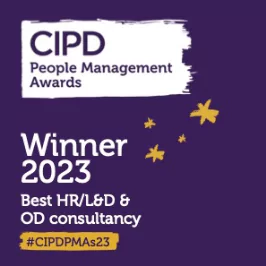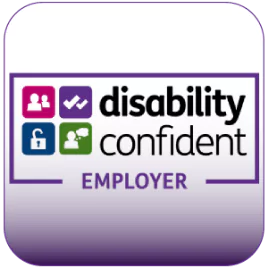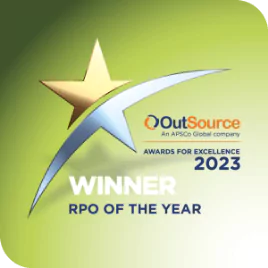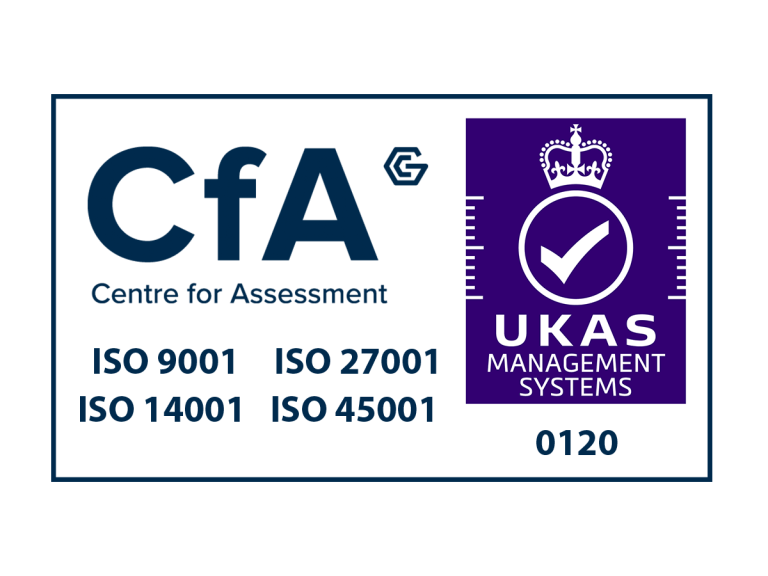Could taking a more inclusive approach to assessment and selection be the answer to recruiting in talent short markets?
The number of job vacancies from July to September 2021 exceeded 1.1 million, an all time high and the second consecutive month the three-month average has risen over one million.
Talent shortages, and the resulting impacts, are widely reported in mainstream news and are a political hot potato. The lack of HGV drivers, agricultural workers, hospitality employees, care and NHS workers have hit the headlines recently. The latest KPMG and REC Report on Jobs survey signalled a further rapid increase in hiring activity, stating that ‘candidate shortages continue to plague businesses, who are all recruiting from the same pool of talent and struggling to fill gaps.’ (2)
Data from the CIPD Resourcing and talent planning survey 2021(3), produced in partnership with Omni, makes for interesting reading against this backdrop. Perhaps unsurprisingly, 45% of organisations report competition for well-qualified talent has increased over the past year. From a candidate attraction perspective, there was a notable decrease in the proportion of respondents reporting that any candidate attraction method had been effective over the preceding year.I In fact, the only method that more say is effective this year compared with last is ‘professional/employee referral schemes’, which may have been particularly useful for organisations that needed to recruit urgently during the pandemic.
Therefore, the ability to recruit in an exceptionally competitive talent market is the priority right now.
Although this presents as a talent attraction or sourcing issue, it is a problem that can, at least in part, be addressed by considering assessment and selection processes. Moreover, there may be an opportunity to kill two metaphorical birds with one stone for organisations that can develop their assessment and selection approaches not only to better support in talent-short markets but that do so by making processes more inclusive to diverse talent pools.
1. Use job analysis to remove blockers to talent joining the organisation.
In the Resourcing and Talent Planning Survey, only one-quarter of respondents said they determine their selection criteria and approach in advance to ensure it is directly related to performance on the job. This means that three-quarters are at significant risk of creating barriers to otherwise well-suited candidates joining on the basis of having criteria in the selection process that are not related to job performance but could discount them from the process.
Although 23% polled said that they remove certain criteria from job requirements, such as first-class degrees, it would appear that most organisations would benefit from taking a more robust and structured approach to identifying what really needs to be considered in the assessment and selection process.
The reason this is of particular importance to those in talent short markets is that by eliminating assessment criteria that are not predictive of performance in role, an organisation will identify and be able to progress, and ultimately hire, talent that they would have previously missed or regretted.
Moreover, if instead of having a long wish list of experiences and attributes of varying degrees of relevance to job performance that candidates must demonstrate, the selection process has an absolute focus on just those criteria that are truly relevant, a wider and therefore more diverse, pool of candidates can be actively considered for the role. This means the organisation will be better positioned to select the best person for the job, rather than just the person that ticks the most boxes or looks most like others in the team, which has significant implications for increasing the inclusivity of the process and the diversity of hired candidates.
In order to impact here, job descriptions should be critically reviewed to ensure they are genuinely reflective of the current role and job analysis undertaken to gather the objective evidence that identifies which criteria really predict performance. Once undertaken, the assessment can be built around these criteria, and the superfluous criteria that may be unnecessarily blocking or putting off candidates from even applying in the first place can be removed.
2. Engage and empower stakeholders to take an inclusive approach to resourcing.
Potentially, there is a silver lining to the talent shortage from a strategic talent perspective, now is the time to take advantage of it. When there is an abundance of talent, a hiring manager’s or organisational leader’s passivity or even scepticism about talent processes that seek to increase inclusivity in the organisation may have little perceived consequence to them. However, when there is a talent shortage, rather than inclusivity being perceived by these managers as a nice-to-have HR initiative, inclusive recruitment becomes the answer to their problem. By definition, a more inclusive approach to resourcing increases the potential pool of candidates available for any role.
Evidence gathered in the job analysis process is highly effective in engaging stakeholders and educating them on the operational or strategic benefits of taking a more inclusive approach to talent. Importantly, during times of shortage or competition for talent, it is easier to demonstrate the impact this can have on their ability to meet their objectives.
At a more tactical level, the CIPD report tells us 30% provide training for all interviewers on legal obligations and objective interview practice. Here, we are less concerned about the legal risk (not to say that isn’t important!), but this number suggests that the vast majority of interviewers, likely hiring managers, just aren’t equipped to make objective decisions, which for a more inclusive and evidence-based approach to selection to work, is vital. It is essential to ensure that everyone involved in hiring has the tools, processes and training needed to empower them to make more inclusive hiring decisions, opening up their talent options.
3. Define a structured assessment that is robust, efficient and decisive
Once the criteria that are truly predictive of success in new hires is identified, a robust assessment process that objectively measures these attributes in the potentially broader pool of candidates is required to allow effective selection to take place.
These defined attributes should form the foundation of a structured assessment process that is effective in measuring the criteria specifically and that does so in a way that is both efficient and decisive. Taking a considered, structured approach, and one deployed by well-trained assessors, means that every engagement with a candidate will be meaningful and provide the decisive evidence to inform the selection decision.
This approach allows for processes to be designed with efficiency at the heart but without compromising on the robustness of the assessment. Specifically, the assessment process can be
designed to swiftly progress candidates from apply to offer, which is vital in many markets, but it ensures that all the relevant evidence is considered before an offer is made.
Although redefining assessment processes can feel daunting, particularly when there are so many other urgent resourcing issues, it is an exercise worth doing as improvements can often be defined and implemented quickly, and the benefits can be considerable and immediate. This is an area that external support can be invaluable; working with a trusted assessment partner to diagnose, design and implement the needed changes will allow you to maintain momentum on key priorities whilst improvements are rolled out.
4. Create assessment and selection processes relevant to the different talent pools
Nearly half of organisations offer apprenticeships, and two-thirds offer graduate programmes. The talent shortage appears to have encouraged some organisations to increase their use of career returner (27% up from 19% in 2020) and mid-career change (21% up from 16%) programmes(3).
Early careers, career changer and returner programmes are well worth considering in talent short markets. However, to be most effective, the assessment and selection process required for each of these initiatives will be different from that which is needed for experienced hires.Inexperienced candidates will not be able to demonstrate the level of in role competence or knowledge that someone that has done a similar role for another organisation. Therefore, the assessment must seek to identify potential rather than their knowledge or track record in a similar environment. Also, candidates will probably not really understand the role, so the assessment process should provide them with a preview that helps them decide if this is the right thing for them. There are also implications about how to test for motivation in a candidate pool that is less familiar with the role. It is too big a subject to go into meaningfully here, but those seeking to assess motivation will get a much better, reasoned and authentic response to ‘why do you want to do this job at this company’ if they ask the question of inexperienced candidates towards the end of the process when the candidate has had the opportunity to find out more and is invested in the process, than if they ask at the beginning of their application.
There are many different ways each of these nuances can be accommodated in the assessment and selection process. In particular, employing well-designed simulation exercises that provide a job preview, can be invaluable. Such exercises allow assessors to understand how the candidate might approach a job-related situation and to see if they are able to employ different behavioural competencies in a situationally appropriate way. Simultaneously, it allows the candidate to get a feel for the role and increases their understanding of what might be required from them.
5. Ensure an excellent candidate experience
Irrespective of the particular talent pool, early careers or experienced hire, ensuring an excellent candidate experience, and one that differentiates your role and organisation from others is vital in talent short markets.
It is very likely that you are not the only organisation your candidates are engaging with and in-demand talent attracts offers from competing organisations. The experience your candidate has through the assessment process, which in a large part is defined by the types of assessments you use and how these are delivered, will be fundamental in their decision as to which organisation to join.
Ensuring that the overall assessment process is aligned with your broader employee brand and company culture is fundamental to success. A well-designed assessment process will be able to
engage a candidate and present the company values, key employer value proposition messaging and provide insight into the culture in a way that a job advert or careers website cannot.
6. Remote assessments for remote roles
The CIPD data shows that 49% of organisations advertise their jobs as open to location at least sometimes. Providing flexibility in the format of remote or hybrid working will open new talent pools as potential candidates no longer need to live a commutable distance from where they work.
From an assessment perspective, this has two implications. Firstly, are the attributes you need from a candidate working from home the same as someone onsite? For example, the ability to self-direct, independently solve problems, network remotely and seek out support when needed may become more important for remote work than when with the team on site. Therefore, this is an important consideration when identifying the assessment criteria. Secondly, if the candidate is a long way from the site, it is sensible for at least some of the assessment process to be conducted remotely so if the current process involves office interviews and assessments, are there are aspects that can be run remotely?
References
(1) ONS – https://www.ons.gov.uk/employmentandlabourmarket/peopleinwork/employmentandemployeetypes/bulletins/uklabourmarket/september2021
(2) KPMG and REC, UK report on jobs – https://home.kpmg/uk/en/home/media/press-releases/2021/09/kpmg-and-rec–uk-report-on-jobs.html
(3) CIPD Resourcing and Talent Planning Survey – https://www.omnirms.com/cipd-resourcing-and-talent-planning-survey-2021/
Changing the way organisations resource for the better.
Omni Assess is the dedicated assessment practice within Omni’s Resourcing Transformation Consultancy. We support organisations to achieve better outcomes through being able to deliver more effective, fairer, more inclusive, more engaging and more reliable talent assessments that enhance talent acquisition, talent development and talent management activities.
For a copy of the CIPD Resourcing and Talent Planning Survey which has been quoted throughout this article is available below.









